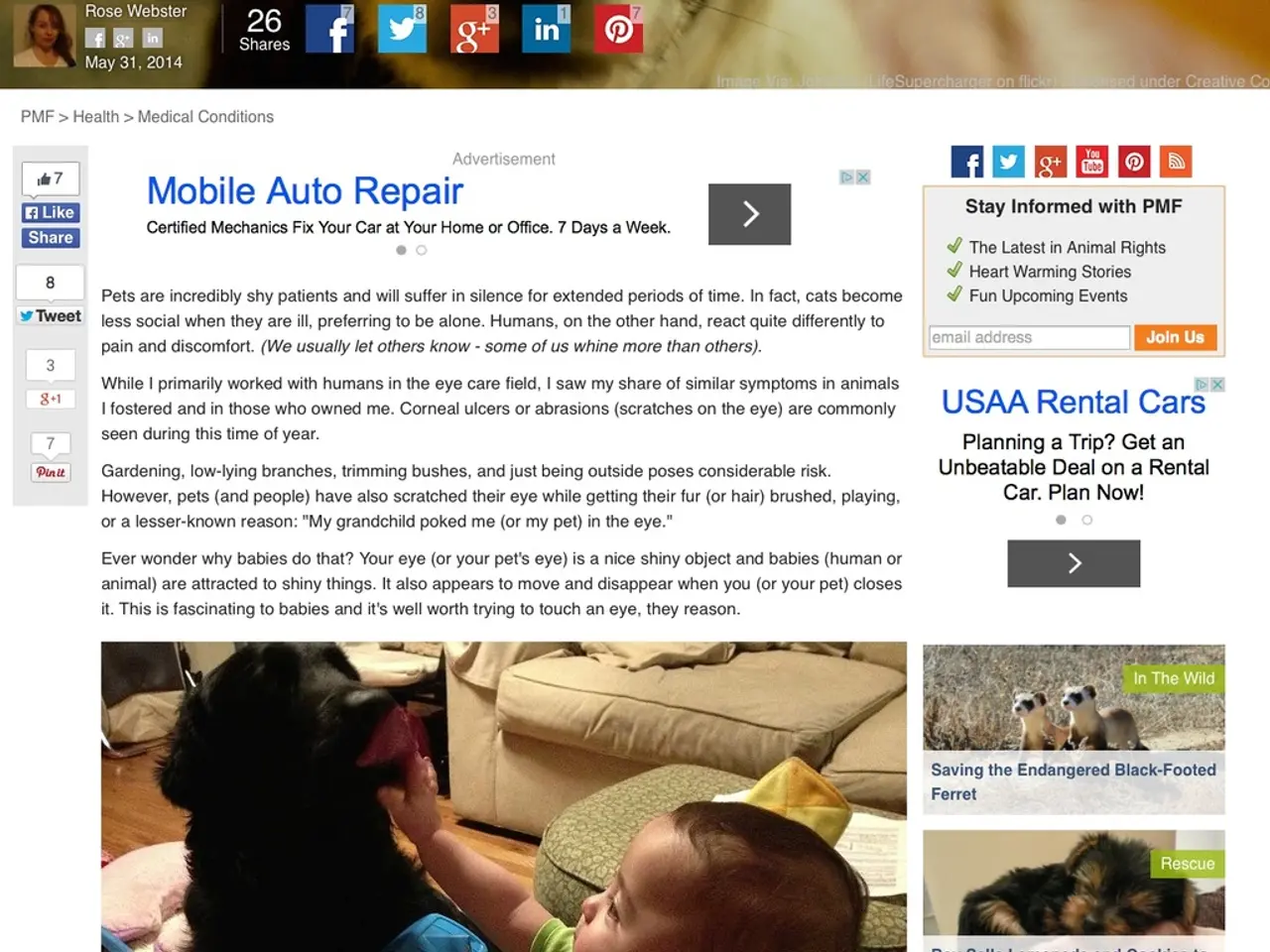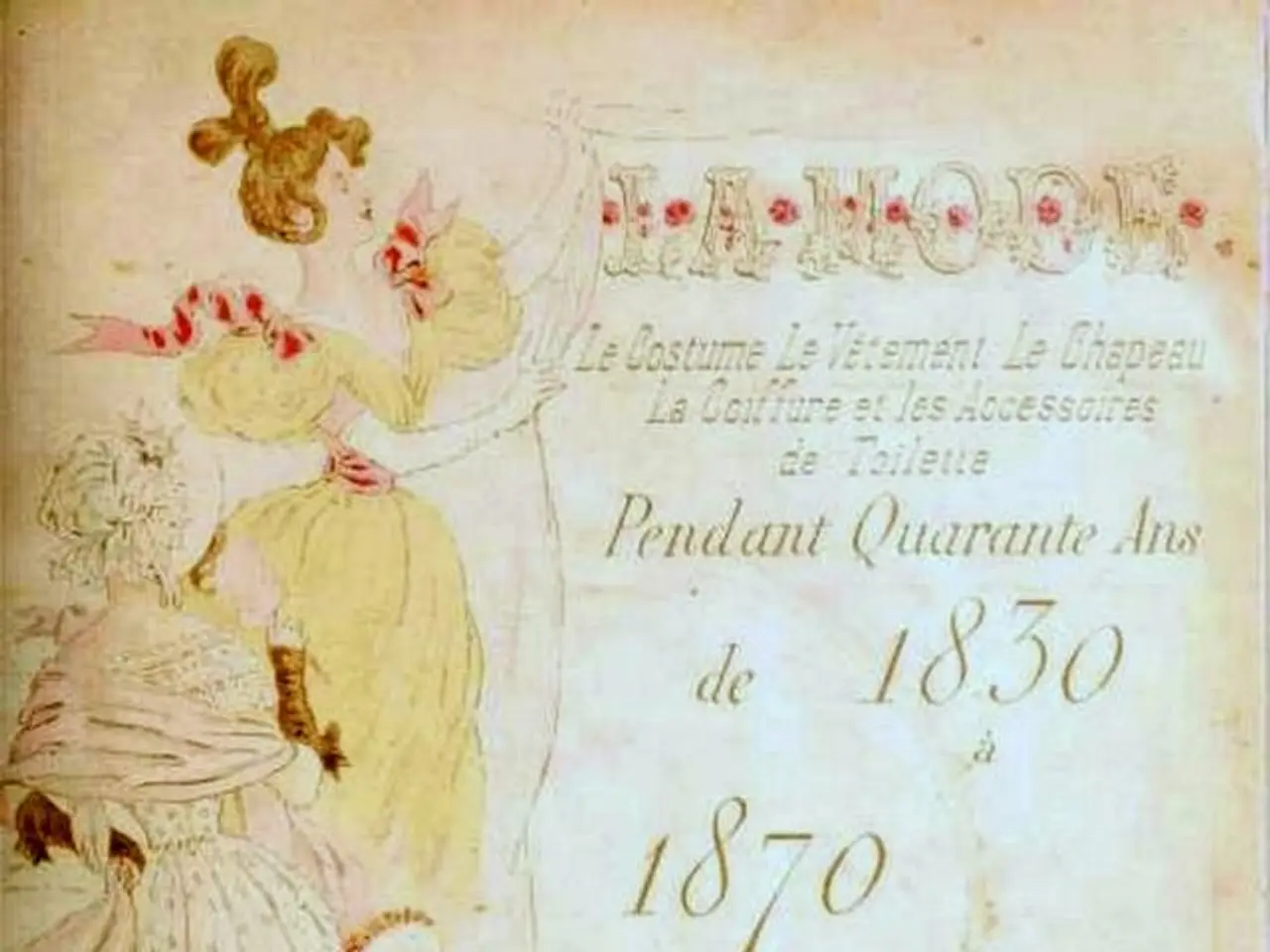Strategies for assisting children in managing the loss of a beloved pet
In the face of the loss of a beloved pet, children may struggle to understand and cope with the concept of death. To help them navigate this difficult time, adults should approach the subject with care, honesty, and empathy.
One valuable resource for children dealing with grief is the heartfelt book, "The Memory Box: A Book About Grief," which offers comfort and support in the wake of loss. Kathryn, a former social worker and lecturer in end of life care with extensive experience in facilitating conversations around death, loss, and grief, recommends this book as a helpful tool for children.
When explaining death to children, it's essential to use clear, age-appropriate language and be honest, avoiding euphemisms that can cause confusion. Children need to know that death is final, their pet is not coming back, and their pet is no longer suffering. During a euthanasia appointment, the vet will spend time preparing everyone, ask an adult owner to sign a consent form, answer questions, and may inject the pet with a sedative before the procedure.
Euthanizing a pet is not painful for the pet, as they are given a sedative beforehand, and the procedure itself is painless. After the pet's euthanasia, their remains can be taken home for burial (checking local laws), organized for cremation, or the vet can organize the cremation with the ashes returned if desired.
Creating a memory box, scrapbook, letter writing, drawing, planting a tree, making a jar of memories, painting a stone, making a memory bracelet, or having a treasured photo framed can help children remember their deceased pet. These activities provide a positive outlet for their grief and can help them externalize and integrate their emotions.
Children may also like to pick special flowers, add favorite items like toys or their collar, draw a picture, or write a poem to place with their pet before burial or cremation. Ceremonies where children can say goodbye to their pet can further provide an outlet for their grief.
It's important to acknowledge a child's feelings and give them space to express grief. Children may respond and react to grief in a very different way than adults, and it's normal for them to have outbursts of emotion followed by periods of seeming indifference. Being clear and honest with children about death is crucial, as using euphemisms can cause confusion and anxiety.
Supporting children through this difficult time also involves taking good care of oneself. The Association for Pet Loss and Bereavement and Lap of Love offer resources for supporting children and adults coping with the death of a pet. Additionally, the book "The Invisible String" by Patrice Karst can be helpful in helping children cope with separation anxiety, grief, and loss.
In conclusion, guiding children through pet loss combines factual explanation, emotional support, and commemorative activities, helping them gradually accept the loss while finding hope and meaning beyond grief. The film 'Inside Out' can encourage discussions around emotions and is a wonderful watch for both children and adults.
- The Memory Box: A Book About Grief, a heartfelt book recommended by Kathryn, a former social worker and lecturer in end-of-life care, offers comfort and support to children grieving the loss of a pet.
- In explaining death to children, it's important to use clear, age-appropriate language, be honest, and avoid euphemisms that might cause confusion.
- When euthanizing a pet, veterinarians usually administer a sedative beforehand to ensure the pet's comfort and minimize any discomfort during the procedure.
- Creative activities like memory box making, scrapbooking, letter writing, or painting a stone can help children remember their deceased pet, providing a positive outlet for their grief.
- An Association for Pet Loss and Bereavement and a service like Lap of Love provide resources for both children and adults coping with the death of a pet.
- The book "The Invisible String" by Patrice Karst can be beneficial in helping children dealing with separation anxiety, grief, and loss.
- A combination of factual explanation, emotional support, and commemorative activities can help children gradually accept the loss and find hope and meaning beyond their grief, as exemplified in the film 'Inside Out.'




